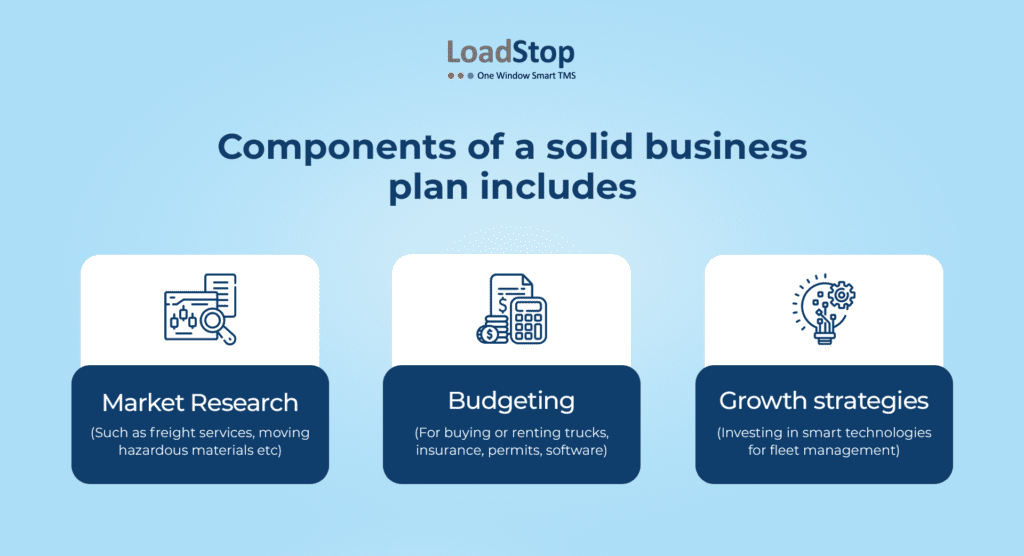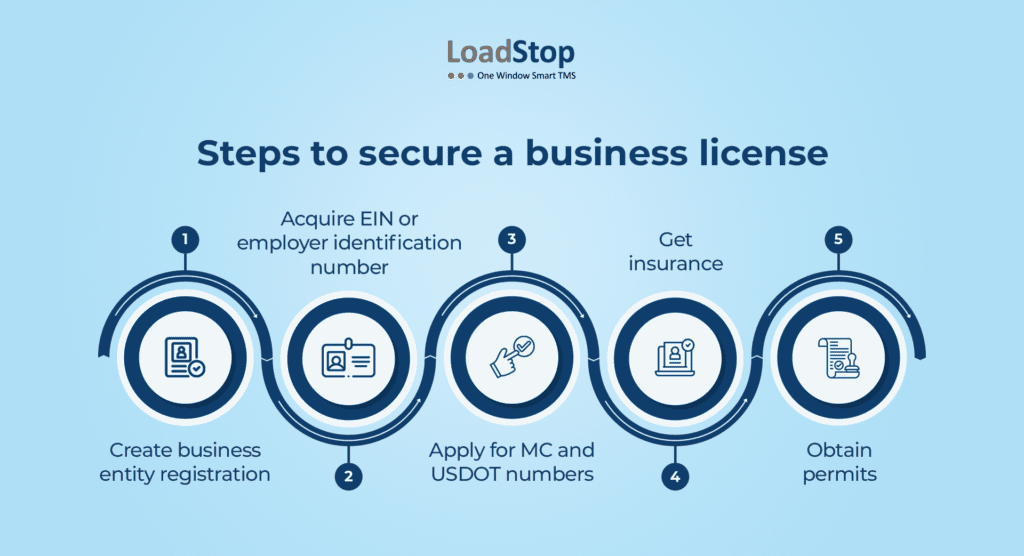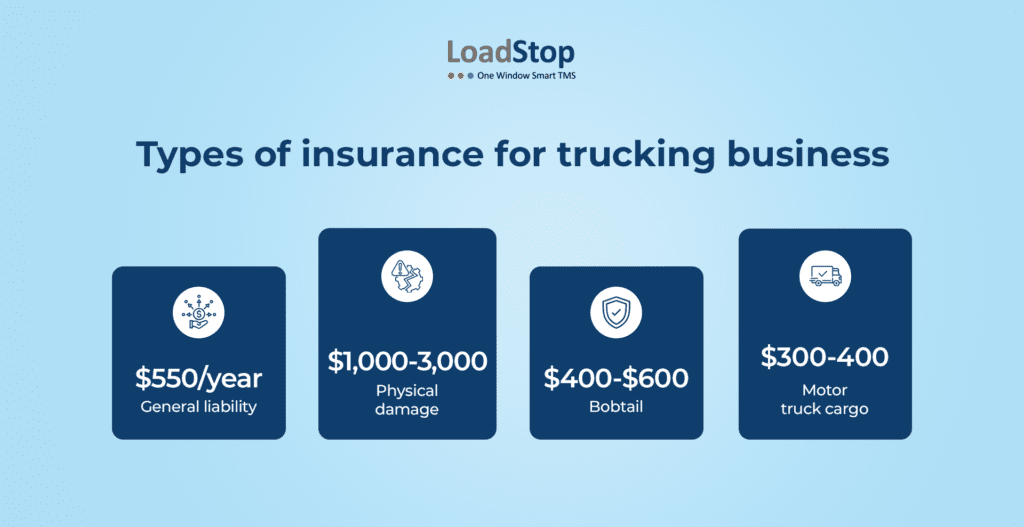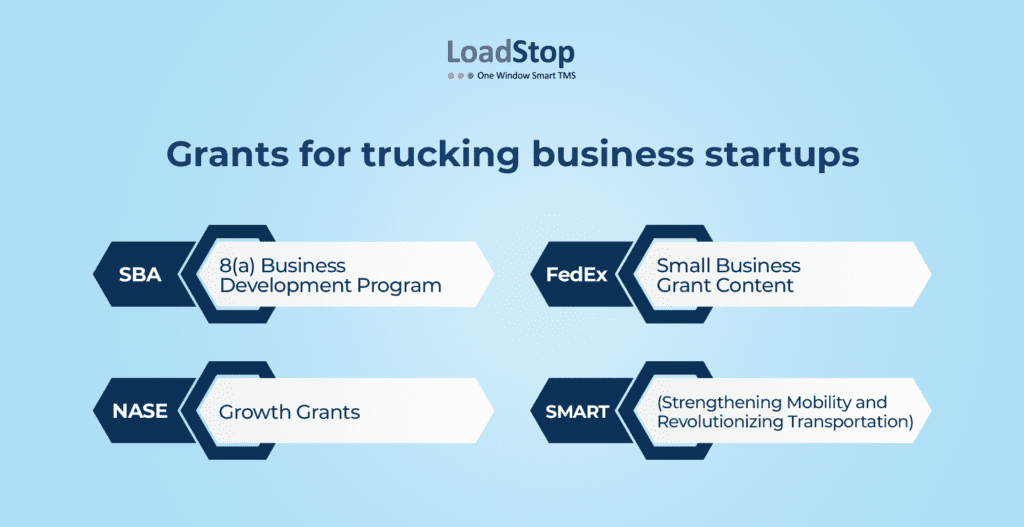Establishing a trucking company in the United States involves more than just getting on the road; it also entails negotiating the complex roads of technology, logistics, and market conditions. With an annual revenue of nearly $875 billion and the ability to transport 72.5% of the country’s freight, the trucking business in the United States is an enormous enterprise. However, how do you get a piece of this rich pie?
This guide to launching a trucking business will help you succeed whether you’re interested in the box trucking or are considering investing in automated trucking solutions.
Understanding the trucking business in the USA
In the United States, the trucking sector is changing dramatically. Companies are testing self-driving trucks to increase productivity and lower operating costs as a result of recent developments in automated trucking technology, which is transforming the market. The American Trucking Association (ATA) said that the sector is experiencing a driver shortage, with an estimated 80,000 drivers needed by 2023. The emergence of automated transportation companies is one example of the innovative potential this has created.
Trucking entrepreneurs are being put to the test, though, by issues like volatile fuel prices and stringent federal and state laws. You may transform these obstacles into chances for personal development if you remain knowledgeable and flexible.
Essentials for starting an automated trucking business
Starting an automated trucking company may seem like a dream come true, but with the correct preparation, it is a feasible and very profitable venture. We examine the crucial elements of beginning and thriving in this field below.

1. Craft a solid business plan
Your road map to success in the trucking industry is a solid business plan. Important elements consist of:
a. Market research
Determining prospects requires an understanding of the US transportation market. Examine the demand for various freight services, such as moving hazardous materials, refrigerated transportation, and box trucks. Examine rivals to find market gaps or underutilized niches. If you want to start an automated trucking company, find out how well-received automation is in your target markets, particularly in locations where there is a labor shortage.
b. Budgeting
Compute your upfront expenses, such as buying or renting trucks, getting the required permits, and getting insurance. Businesses that prioritize automation should also set aside money for cutting-edge equipment like sensors and fleet management software.
Allocate funds for unforeseen expenses while estimating operational costs such as fuel, payroll, and maintenance. In addition to aiding in cost tracking, a well-organized budget also facilitates obtaining funding from lenders or investors.
c. Growth Strategies
Start small and concentrate on a specific market before progressively growing. Invest in technology to cut expenses and increase operational efficiency. Software for fleet management and GPS tracking, for example, can improve real-time communication and route optimization.
To increase your reach and clients, you should also think about partnering with logistics firms or participating in freight marketplaces.

2. Secure business license
A crucial first step in avoiding legal issues is obtaining legal certification for your trucking company. The necessary actions to obtain your business license are listed below:
a. Create a business entity registration
Based on your liability and tax preferences, decide whether to form your company as a corporation, LLC, or sole proprietorship. Once you’ve made up your mind, register your company name with the federal and state governments.
b. Acquire an EIN, or Employer Identification Number
Register with the IRS for an EIN. Hiring staff and filing taxes both require this number.
c. Apply for MC and USDOT numbers
To track safety compliance for interstate trucking, the USDOT number is necessary. On the other hand, you can move regulated goods over state boundaries with an MC number. The Federal Motor Carrier Safety Administration (FMCSA) has both available.
d. Safe insurance protection
In the United States, trucking companies must adhere to certain liability insurance requirements. To shield your company from financial dangers, you must have physical damage, cargo, and general liability insurance.
e. Obtain any necessary special permits
According to federal and state requirements, you will require additional permissions if you intend to move hazardous products or drive big or overweight vehicles.

3. Get trucking business insurance
When starting a trucking business in the USA, insurance options are a point of concern. You can choose the insurance depending on the type of trucks, drivers, carried goods, and so on.
Types of insurance
Truck drivers are required, by the Department of Transportation, to carry insurance coverage between $750,000 and $1,000,000. The size of the vehicle, the distance it will travel, and the kind of goods you will be transporting all affect how much insurance you will need. Some of the few insurance coverages you need to consider in trucking operations can include:
General liability: It protects the company if property damage or bodily damage is caused by the driver in a crash. Driver’s actions are covered under this insurance such as load delivery mistakes. Generally around $550/year are paid for general liability.
Physical damage: If any kind of damage happens to the truck or trailer like vandalism, collision, theft, or natural disasters, the repair cost like $1,000 to $3,000 is covered in this insurance.
Bobtail: Also known as non-trucking liability, covers $400 to $600 in situations where a truck driver is off dispatch for personal reasons.
Motor truck cargo: If your truck or commercial goods are lost or damaged, this insurance covers the expenses about $300-$400 per truck a month.
Tools and technology to grow your trucking business
Because owners and fleet managers struggle with workflows, have a hard time ensuring timely deliveries, and maintain driver’s schedules, using smart technology can be helpful
Use of AI software for trucking business operations
The use of SaaS-based AI software for trucking has been around for a while now. Fleet managers, dispatchers, and owner-operators are now looking forward to investing in the best TMS for trucking business in the US. Advanced technological tools help to reduce deadhead miles, track loads, manage drivers’ schedules, and do a lot more while profitability keeps increasing. Some of the benefits of implementing a fleet management software can help with:

Availability
A carrier need not acquire new servers or additional licenses to accommodate growth; everything expands harmoniously, allowing the company to expand seamlessly without encountering scaling challenges.
This is particularly advantageous for larger carriers with multiple partner and customer integrations, as they can scale without enduring prolonged downtime, unlike on-prem solutions, which often necessitate complex infrastructure development.
Backup/restoration
In terms of backup and restoration, trucking TMS offers heightened reliability. If a fleet manager is using on-prem systems, they may conduct backups on a weekly or even monthly basis. An advanced transport management solution ensures data integrity by performing backups every five minutes via cloud processing.
Recovery times are also significantly improved. With SaaS-based TMS, the potential data loss is limited to five minutes, and system recovery can be swiftly executed from the ground up in a separate environment within four hours.
Futureproofing
Upgrading is easy with AI-based TMS because it helps prevent stagnation of technology that could expose systems to security risks. This flexibility also enables the incorporation of new technologies that enhance system performance and speed.
Interoperability
Interoperability is significantly enhanced by most TMS systems’ application programming interface (API) orientation. This enables smoother integration of applications compared to the alternative of developing middleware that acts as an intermediary between an on-prem solution and external parties seeking access to data.
This agility is pivotal in meeting the growing demand for digital automation and data availability.
Extensibility
Extensibility ensures that software remains aligned with evolving business and technological needs. Regular software updates are a hallmark of SaaS-based TMS, occurring roughly every month, compared to the less frequent on-prem updates that span for years.
Security
Trucking software is subject to constant penetration testing to ensure protection. It allows providers to handle security aspects.
Get apps and software for trucking business
Software and apps designed specifically for transportation companies increase productivity, save expenses, and streamline operations. Using the appropriate tools can greatly improve your business results, regardless of whether you’re managing a small fleet, operating a box trucking company, or investigating an automated trucking firm. Here is a thorough explanation:
You can use multiple apps for unique reasons. For instance, fuel costs account for nearly 24% of the total expenses for most trucking businesses. Using a fuel tracking app will allow you to monitor fuel usage, prevent wastage, lower the fuel price in real-time, and also better manage fuel card systems. A fleet operator using the Driver App can easily manage the driver’s schedule, and route optimization, therefore reducing fuel expenses in the longer run.
Financial support for the trucking transport business in the USA
You cannot start a trucking company without money. Financing can be a major concern for small startups while necessary registrations and the need to secure equipment become secondary. Contrary to the massive belief, you do not need to start big. You can avail of grants for truck drivers and get started even with one truck.

Grants for trucking business startups
Some grant funding committees support small trucking businesses, giving more context of why these grants are chosen. However, it brings opportunities to launch the trucking business. You can avail any of the following:
a. SBA 8(a) Business Development Program
Supporting enterprises that are economically or socially disadvantaged is the main goal of the SBA trucking grants. You may be eligible if you are low-income, belong to a minority group, or are from an area of the nation that is experiencing economic hardship.
b. FedEx Small Business Grant Content
Being one of the most popular and widely known trucking companies in the US, they have introduced a FedEx Small Business Grant Contest. Startups can have a chance to win up to $50,000 for their trucking business and it’s not even limited to truckers! Everyone can apply for this grant.
c. NASE Growth Grants
The National Association for the Self-Employed aims to support growing small businesses country-wide. You can avail of the grant of up to $4,000 that can be used to hire new employees, expand the facilities, and marketing. All you need to do is become a member of NASE but a new entrepreneur can join in early and apply for the grant.
d. SMART (Strengthening Mobility and Revolutionizing Transportation)
This program was established by BIL (Bipartisan Infrastructure Law) with $100 million appropriated for 2022-2026. With this program, eligible public sector agencies conduct the demo projects. SMART is a 2-stage program where stage 1 is valid for up to 18 months and stage 2 is valid for up to 36 months.
Business Loans for trucking companies
If you are not up for a grant, a trucking company or a trucker can consider multiple financing options and a business loan is one of them. Let’s take a look at a few of them:
a. Equipment loans
One kind of installment loan utilized to pay for related expenses for running your trucking company daily is an equipment loan. For example, you can get a loan to buy a new truck, fix your truck, or replace your old equipment. Collateral may occasionally be required in order to obtain a loan.
b. Equipment lease
These are very similar to auto leases, where you agree for the payments to be used for the truck that ends till the agreed-upon lease term. There’s no down payment either. These leases are available for new commercial trucks and you will not own the truck once the lease is over.
Choosing the best place to start your trucking business
Starting a trucking business in the proper place is just as important to its success as having a robust fleet and effective operations. Selecting the ideal location entails assessing several important aspects that have a direct bearing on long-term growth and profitability.
The demand for trucking services
The lifeblood of your trucking company is demand. Freight volumes will inevitably be larger in states with thriving businesses like manufacturing, agriculture, or retail. Urbanization and population increase frequently result in a greater need for the transportation of commodities, which makes these areas perfect for trucking companies.
Proximity to shipping hubs
Being close to important shipping hubs, such as ports, rail terminals, and distribution centers, can greatly cut down on empty miles and increase income. Logistics is all about efficiency. Keeping your vehicles moving is quicker and less expensive the closer you are to freight sources.
State regulations
Operating a trucking company is easier in some states than in others. Your life may be made easier by reduced taxes, expedited permitting procedures, and affordable gasoline prices. Conversely, jurisdictions with stricter environmental laws (California, for example) may demand larger initial outlays, such as buying trucks that meet emissions standards.
States in the USA That Are Good for Trucking
Texas: A bigger place for everything, including opportunities
Texas is a trucking entrepreneur’s dream due to its extensive highway network and robust economy. The state is home to important cities that are centers of manufacturing and trade, such as Dallas and Houston. Additionally, the Port of Houston serves as a gateway to global trade, which keeps your trucks occupied all year long.
Georgia: Logistics’ Southern Charm
Atlanta, Georgia, is renowned for more than just its peaches; it is also one of the nation’s most important logistics centers. The Port of Savannah is a significant factor in the need for freight, and Atlanta is a transportation hotspot due to its location at the intersection of important routes.
Illinois: The US’s Freight Capital
Chicago, the logistics hub of the Midwest, introduces trucking companies to Illinois. This state has considerable demand from a variety of industries, a good highway network, and access to numerous intermodal freight facilities.
Florida: Sunshine and Shipping
Florida is a center for trucking companies in addition to being a place for retirees. Florida maintains a rapid pace of freight movement thanks to its expanding population, thriving e-commerce, and important ports like Miami and Jacksonville.
Pave the way towards success with LoadStop
It takes more than just moving cargo from point A to point B to launch a profitable trucking company in the United States. It all comes down to picking the ideal site, utilizing technology, and maintaining an advantage in the very competitive US transportation market. You may position your company for success in the booming US trucking market by taking into account elements like state legislation, location to important transportation hubs, and service demand.
However, the path to wealth doesn’t end there. You need solutions that streamline processes and increase productivity if you want to succeed, and LoadStop is just that. Consider LoadStop to be your trucking co-pilot, assisting you with scheduling, compliance, fleet tracking, and fuel optimization from a single platform.
LoadStop guarantees that you spend less time on logistics and more time expanding your company by providing solutions designed to meet the demands of both traditional and automated trucking companies. Whether you’re navigating the highways of Texas or the logistics parks of Georgia, remember: that with the right plan and tools like LoadStop in your corner, your trucking business is destined to go the extra mile!
Get the aid of LoadStop to run your trucks smoothly
Book a DemoFAQs
Yes, you may be eligible for grants to start your trucking business. Various federal, state, and local programs offer small business grants for entrepreneurs. Look into options like the Small Business Administration (SBA), local economic development agencies, or industry-specific grants.
LoadStop helps trucking businesses streamline operations by providing tools for fleet management, dispatching, route optimization, and real-time tracking. It simplifies logistics, reduces costs, and improves efficiency, making it easier to manage and grow your business.
The cost of starting a trucking business varies but typically ranges between $10,000 and $50,000. This includes expenses like purchasing or leasing a truck, insurance, licenses, permits, and initial operating costs. A solid business plan can help you estimate and manage these costs effectively.



